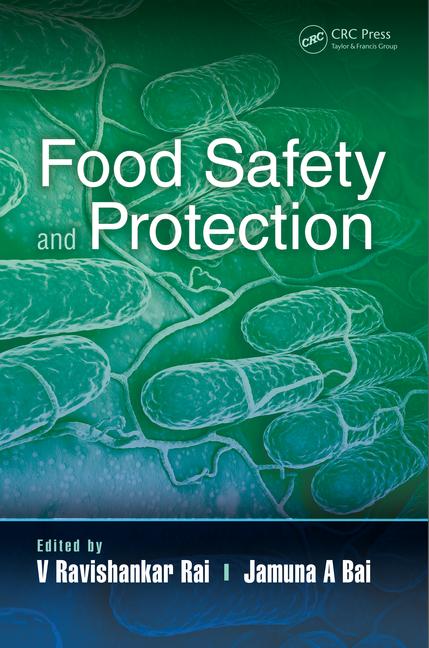Food Safety Priorities and Plans for 2020

For many of us, it is that time of year again: when we need to be ready for a new year, with budgets finalized, project plans put in place, long-term goals considered, and immediate goals for 2020 agreed upon.
Your work in food safety is a 24/7, 365-days-a-year responsibility, but you still have specific projects planned every year to improve your programs. So, as part of our Food Safety Insights program, we wanted to find out what are the key priorities you have in general for your program as well as what will be the key projects, initiatives, and regulatory requirements that will have your attention in the coming year.
 So, we asked. And we received responses from more than 200 processors from around the world in a wide variety of processing categories (Figure 1). We received responses from individuals at these companies with a wide range of years of experience (Figure 2) in food safety, from 1 year or less to 40 years or more to—what may have been my favorite answer—“too damn many.” (I guess we have all thought that from time to time!)
So, we asked. And we received responses from more than 200 processors from around the world in a wide variety of processing categories (Figure 1). We received responses from individuals at these companies with a wide range of years of experience (Figure 2) in food safety, from 1 year or less to 40 years or more to—what may have been my favorite answer—“too damn many.” (I guess we have all thought that from time to time!)

What Did We Find?
We asked open-ended questions where you could offer any answer you wanted in any category of food safety or operation related to food processing. The first of these was, “What would you say are your top priorities for food safety for 2020?”
 It was clear from the responses (Figure 3) that issues related to microbiology, environmental monitoring, and pathogen control still occupy a primary focus as roughly one in five (21%) responses included some aspect of microbiology and control. Some of the comments mentioned specific targets, such as Listeria and, specifically, control of L. monocytogenes, with several processors in the meat and protein category looking to improve their Salmonella and Campylobacter control programs, most likely in anticipation of impending regulatory and enforcement initiatives.
It was clear from the responses (Figure 3) that issues related to microbiology, environmental monitoring, and pathogen control still occupy a primary focus as roughly one in five (21%) responses included some aspect of microbiology and control. Some of the comments mentioned specific targets, such as Listeria and, specifically, control of L. monocytogenes, with several processors in the meat and protein category looking to improve their Salmonella and Campylobacter control programs, most likely in anticipation of impending regulatory and enforcement initiatives.
The second-most-mentioned priority was ongoing work to achieve compliance with basic regulatory and third-party certification. Sixteen percent of the respondents mentioned that they still had work to do to meet regulatory requirements [Food Safety Modernization Act (FSMA) and others], and another 12% mentioned improvements needed to achieve or maintain compliance with or expansion of third-party certifications and their audit requirements.
In terms of regulatory requirements, many mentioned that they were focused on compliance with upcoming aspects of FSMA, particularly the Intentional Adulteration (IA) rule. Many commented on the wide-ranging scope and impact of the rule, with it touching many areas of their operations, including employee issues, security, supply chain, and others. The impact of the scope of the rule was well-stated by one respondent who commented, “I think the IA rule is most impactful in terms of resources we will need to expend to continually comply… and will be second only in terms of compliance to FSMA itself.”
Many others mentioned that their priority for the next few years will be on improvements to ensure compliance with or to expand their scope of third-party certifications. Roughly an equal number of companies reported that they have additional work to do to either achieve initial certification or ensure their continued compliance with these programs versus those that were looking to add new certifications or scopes, and/or expand certification to more facilities.
Training Is on the Rise
As we have seen before, employee training and education continues to be a high priority, with about one in six stating this as a top priority. As we have seen previously, the term “employee training” refers not only to better training methods but also to efforts to get better employee compliance.
Many respondents to this survey mentioned a need to develop and incorporate new and improved training methods into their training programs over time. Some methods mentioned included adding more technology, including using more self-guided training programs that people can more easily access or use as refresher trainings as needed. And as “employee training” also means compliance, often the priorities are basic, including the basic issue of handwashing that is frequently mentioned as a problem. Several of the processors mentioned that getting a high level of compliance with handwashing and similar fundamental food safety practices is an ongoing specific priority. This led some to suggest that eventually developing monthly training on such key topics, incorporating more feedback from the processing floor, and using continuous training programs to ensure better employee engagement and buy-in would help improve compliance and improve their overall food safety culture.
Can It All Be Done?
So, we heard about your top priorities, but what do you think you can actually accomplish in the next 12 months? To that end, we next asked the more pointed question, “What improvements in your food safety program or processes are you planning to complete in 2020?”
 Following what we just discussed, the most frequently mentioned immediate plan for projects in 2020 related to improvements in training programs (Figure 4). The processors mentioned that in addition to basic compliance, they needed to get their team better trained and up to speed in several specific areas—including compliance with their certification compliance requirements and specifically “audit readiness.” The other major area mentioned was specific training in plans and procedures for the security requirements for their developing intentional adulteration and food defense programs.
Following what we just discussed, the most frequently mentioned immediate plan for projects in 2020 related to improvements in training programs (Figure 4). The processors mentioned that in addition to basic compliance, they needed to get their team better trained and up to speed in several specific areas—including compliance with their certification compliance requirements and specifically “audit readiness.” The other major area mentioned was specific training in plans and procedures for the security requirements for their developing intentional adulteration and food defense programs.
After training programs, the two other areas where processors said they would have the most active projects in the coming year were focused on 1) improved environmental monitoring and microbiology control, and 2) enhancements to their supply chain control programs.
Processors reported that they recognize that they need to get better at finding and detecting pathogens, especially those that may become harborage organisms. Many mentioned that they plan to add specific pathogen sampling and analytical capabilities in 2020, with several identifying project plans to add more in-house laboratory capabilities, with a need to have capabilities for detection of Listeria being most mentioned. One mentioned that they intend to complete a “thorough seek and destroy” project this year, with another processor saying that they had immediate plans to improve their sanitation program and “better manage our ATP verification program.”
Supply chain concerns drove the other top area for projects next year. Many mentioned that management of their supply chain—especially their international supply chain—and compliance with the FSMA Foreign Supplier Verification Program was their biggest need. For many, the immediate work involved improved physical control and testing of products, with “better raw ingredient controls” and “better receiving controls and traceability for spices and other ingredients” being most mentioned. Supply chain needs also included work to ensure compliance with the FSMA Produce Safety rule, with the sentiment well-captured by one processor who said, “We have an immediate need for enhanced prescreening of produce to be harvested.”
Other areas of supply chain improvement were more related to documentation controls, online tracking and traceability tools, and improvements in supplier-approval programs.
We also asked processors about the regulations that they find most impactful to their programs, those that are making the most significant contributions to food safety, and those regulations—although recognizing that compliance is necessary—that are having the least impact on their ability to produce safe and wholesome foods. We’ll explore these topics and present further details from our interviews with processors in the next edition of Food Safety Insights in the February/March 2020 issue of Food Safety Magazine.
Bob Ferguson is president of Strategic Consulting Inc. and can be reached at insights@food-safety.com or on Twitter at @SCI_Ferguson.
Looking for a reprint of this article?
From high-res PDFs to custom plaques, order your copy today!









